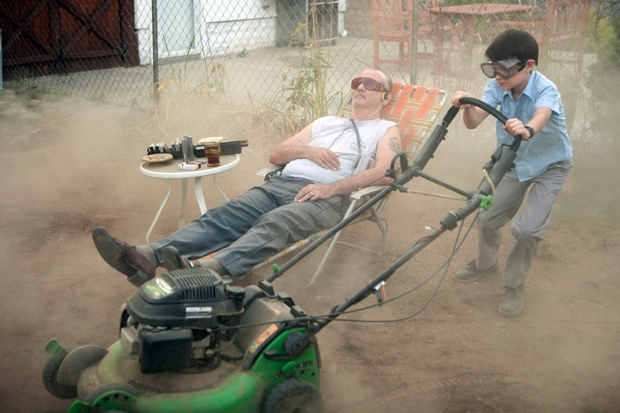Is Bill Murray fit for sainthood? Certainly his fans have him figure as some sort of lesser divinity, maybe one of the more saturnalian Greeks or pagans, with a taste for crashing karaoke parties with a pretty Dutch girl on their arm. How else to explain his mysterious deus-ex-machina drop-ins at random points around the globe — driving golf carts around Stockholm, reading poetry to construction workers in New York, acting as roadie at a rock festival in Texas? Where else does Murray’s power of deadpan derive if not the omniscience of a melancholic and slightly bored God, trying his best to wile away eternity? That’s why his best role continues to be Groundhog Day, in which he played just that.
More recently he’s started to show up in more earthbound form. He played FDR to perfection in Hyde Park on Hudson — his voice hoisted high in imitation of FDR’s patrician drawl, head thrown back in laughter, martini glass brimming o’er with Wodehousian good cheer, Murray didn’t disappear into the role so much as disappear into the air of moonlit mischief that hung over the movie, like a twinkly master of ceremonies. In St. Vincent, he plays a cranky old codger who pads around his dilapidated suburban house in sleeveless T-shirts, a thick Boston-Irish accent and a cloud of cigarette smoke: a Bukowski slob who collects dust like it was a protected species. Murray doesn’t break character for one second, but since when was it fun to watch Murray not break anything? In rampant form, he can destroy whole movies with one look, his gaze so drained of illusion as to suggest that everything — the other actors, the film he has the ridiculously bad luck of having to appear in — is up for ridicule.

There’s none of that delicious sedition here, although he does get one great moment of ingratitude when someone cleans up his apartment: ‘Where’s my dirt?’ You could ask that of the whole movie, one of those faux-indies the studios have got better and better at fabricating, this one from the Weinsteins, the soundtrack mixing Jefferson Airplane and The National with hipsterish eclecticism, while the director Theodore Melfi favours flattish, off-centre compositions dominated by a single bright colour, with occasional bursts of slo-mo, à la Wes Anderson.








Comments
Join the debate for just £1 a month
Be part of the conversation with other Spectator readers by getting your first three months for £3.
UNLOCK ACCESS Just £1 a monthAlready a subscriber? Log in